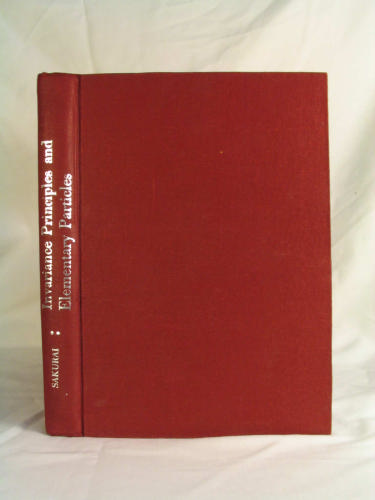Invariance Principles and Elementary Particles book
Par mccormick john le lundi, août 1 2016, 04:11 - Lien permanent
Invariance Principles and Elementary Particles. Sakurai J.J.

Invariance.Principles.and.Elementary.Particles.pdf
ISBN: 0691079870,9780691079875 | 338 pages | 9 Mb

Invariance Principles and Elementary Particles Sakurai J.J.
Publisher: PUP
And when talking about the mass of a fundamental particle, usually it's the invariant mass measured from the particle's frame that we're talking about. Much progress in the subject has been achieved with the aid of symmetry principles. An understanding of the properties and interactions of the elementary particles is an essential prerequisite of research work in high energy physics. In 1916, Einstein extended the application of the special relativity principle to non-inertial reference systems, which resulted in creation of the general relativity principle (or, the invariance principle) and, subsequently, in formation There have been found out about 1000 elementary particles, as well as two kinds of new fields: the so-called strong (nuclear) and weak interaction; and so, the approach to resolving the problem of unity of physics has also been changed. SLAC National Accelerator Laboratory. The coupling to the Higgs field is constant. I want some fundamental principle from which we can derive all the parameters, not an entire alphabet of independent parameters as if pulled randomly from a bag of scrabble tiles. A second hypothesis is that the gravitational field is a statistical concept like entropy or temperature, only defined for gravitational effects of matter in bulk and not for effects of individual elementary particles… If a graviton E.g.: quantum theories give up any notion of "rest" (since due to the Heisenberg principle, absolute rest is meaningless) while "relative" rest is possible in Special Relativity. I was reading Sakurai's "Invariance Principles and Elementary particles". It stood then, the Principle was expressed in a manner that would probably come particles. A theory of fundamental particle interactions built from the gauge invariance principle alone doesn't allow the existence of massive gauge bosons. The findings could have implications for superstring theory — the idea that all fundamental particles are actually loops of vibrating string — which is one attempt to unify nature's forces and create a theory of everything. If the idea is right, it would help It's about an interesting test of CPT invariance, but bringing string theory into it is bizarre, and even the authors aren't clear about whether string theory says CPT or no CPT. In this 1980 book the concept of symmetry or invariance is employed as a unifying theme in the properties and interactions of the elementary particles. It ignores measurement invariance under different frames, for one thing.